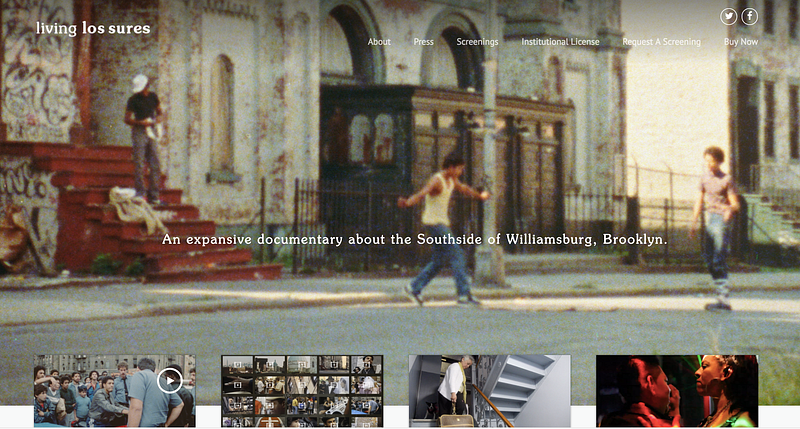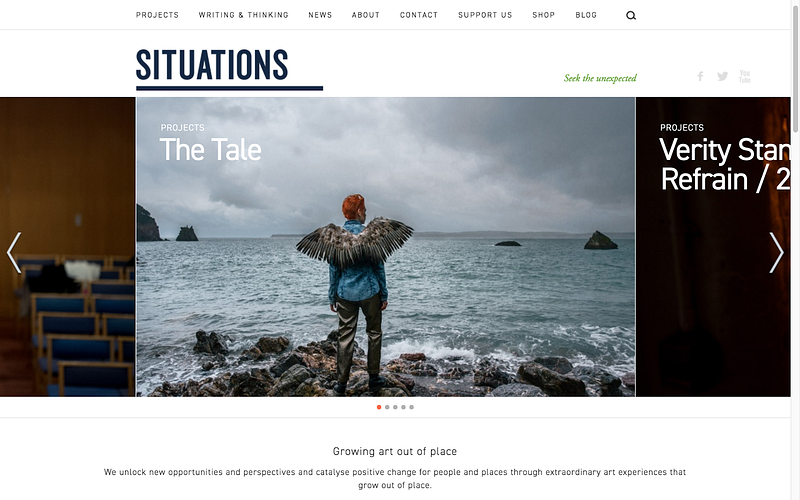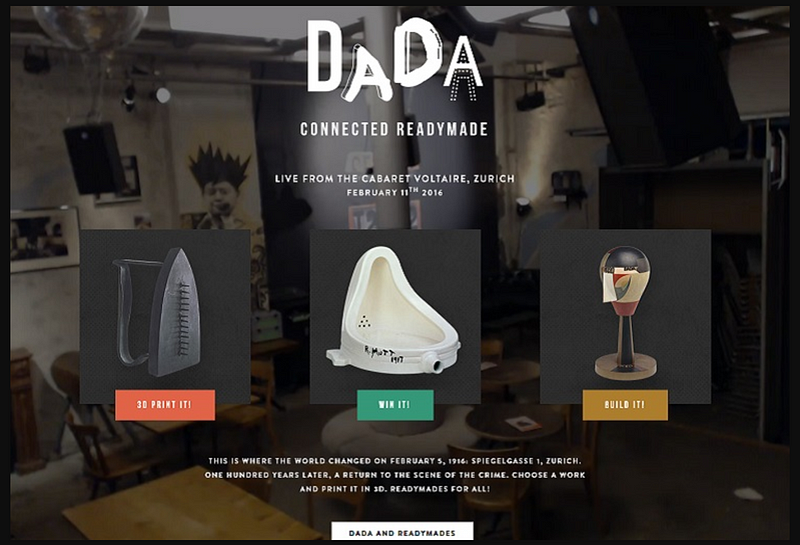Fighting algorithmic manipulation and filter bubbles with physical engagement
An Immerse response, By Judith Aston
Thank you to Sandra for addressing this question in such a clear and poetic manner. I remain in complete agreement that “we need to fight for digital platforms that are based on the values we want to defend: inclusion and multiplicity rather than manipulation.”
Whilst the problems of algorithmic manipulation and filter bubbles need to be addressed on several fronts, the strategy I am proposing here is that of “emplaced interaction.”
When applied to interactive documentary, this is a strategy which marries the digital with the analogue to create shared experiences with elements of face-to-face and site-specific experience at their core.
These experiences might come out of long-term engagement and interventions with place or they might be short-term, creating what have been called “temporary autonomous zones.”
Quoting from my i-docs book chapter, I see this as a strategy, which can help to “keep technology in its place” and which works towards ensuring that, in a globalized world, “the Internet, virtual reality and robots do not take us over.”
Documenting begins at home
An example of interactive documentary work that demonstrates sustained engagement with physical place is Living Los Sures. This is a collaboration between the UnionDocs Centre for Documentary Art and its surrounding community in the south side of Williamsburg, Brooklyn.

Known by its long-term Latino residents as “Los Sures,” in the late ’70s and early ’80s, the neighborhood was one of the poorest in New York City. Today, however, it has very much become the site of a battle between local identity and luxury lifestyle.
With the restoration of a film made about Los Sures in the ’80s, the project has developed into a collection of 40 short films, the interactive documentary 89 Steps, and the cinematic people’s history Shot by Shot.
All of these are based on memories and sense of shared local culture, helping to give the Latino residents a sense of ongoing identity and ownership within a rapidly changing neighborhood.
This has been an emplaced project from the start, with regular screenings, community discussions and collaboration with a long-standing community organization in the area, El Puente.
In a case study for our i-Docs book, Christopher Allen, the project’s executive producer and artistic director, reports that El Puente is now collaborating with UnionDocs on a pilot curriculum for youth project. This will use Living Los Sures to speak to local issues, media literacy and documentary.
Bringing communities into the process
Other notable interactive documentary projects that have incorporated emplaced interaction into their production methodologies and distribution strategies are Blood Sugar, Hollow, One Millionth Tower and Question Bridge.
All four of these have built community workshops into the heart of their processes. They have shown commitment to building community participation from the ground-up to raise ongoing debate about issues of poverty and marginalization.
They have also included emplacement as part of their distribution strategy, through localized screenings, installation and live events.
Taking inspiration from Temporary Autonomous Zones
Temporary autonomous zones are spaces that use their ephemerality to focus on the present and elude formal structures of control. In so doing, the idea is that they can create non-hierarchical systems of social relationships, releasing the mind from the controlling mechanisms that have been imposed on it.
This is empowering for individual and collective creativity and it often involves the re-appropriation of abandoned or contested physical spaces.
Situations, an art project based in my hometown, Bristol, although not so overtly political as some of these other examples above, aims to “unlock new opportunities and perspectives and catalyse positive change for people and places through extraordinary art experiences that grow out of place.”

Similar examples would include:
- Dismaland, a temporary art project organised by the street artist Banksy, which appropriated an abandoned spa resort in the nearby British seaside town of Weston-super-Mare.
- The immersive theatre group Punchdrunk—a nomadic organization which makes site-specific work, often allowing audience members to wander and experience the work as they see fit.
These approaches extend well beyond interactive documentary. In this sense, they offer new approaches to practice, which can be applied to interactive documentary as opposed to growing directly out of it.
Temporary autonomous zones inside of interactive documentary
David Dufresne’s work is a good example how this approach might work within interactive documentary, especially given that he articulates his own practice within this context.
With Fort McMoney, he created a “temporary autonomous zone” online to create dialogue and raise awareness about the responsible development of the world’s largest oil sands in relation to the real town of Fort McMurray.
Then with his next project, DadaData, he made the dialogue itself more emplaced by running a live interactive documentary event at the Cabaret Voltaire in Zurich, one hundred years on from the Dada movement’s original launch.

Other examples of using documentary techniques in a place-based experience include:
- Rider Spoke, in which participants rode round London on bicycles equipped with handheld computers. Searching for hiding places, they listened to other peoples’ messages and recorded their own too.
- Bordergame, which asked participants to convince a fictional group of border guards that they were eligible to enter the “autonomous republic of Wales.” Remote online players decided who got through.
These are all projects that have worked with temporary autonomous zones, across the analogue and the digital, to explore new ways to create dialogue around and engagements with physical place.
In bringing them into the mix of possibilities, my hope is that they will help to keep us grounded in the physical world, mindful of its importance to our ongoing engagements with community and environment.
Decentering our dependence
My argument here is that we need to work with all the means available to promote the values of tolerance and understanding upon which i-Docs is predicated. As such, I see marrying emplaced interaction with interactive documentary as offering us some new possibilities through which to look at the three c’s of community, complexity and context.
This argues for the creation of experiences which have a sense of time, place and occasion at their heart, and which acknowledge the interplay between the live and the mediated, the analogue and the digital, the real and the virtual. Adding a performative dimension to interactive documentary can help to decenter our dependence on the virtual by focusing our engagements back into the physical world.
Producing such projects can help us to resist what I see as the increasingly urgent dangers of becoming overly dependent on social media, with its use of cookies to monitor our actions and algorithms to create filter bubbles, and on virtual reality, with its isolating headsets and disconnection from physical place.
Judith Aston is co-director of i-Docs and Senior Lecturer in Film and Media at University of the West of England, UK. Find out more here.
This piece appears in issue #10 of Immerse, which was curated by the editors of i-Docs: The Evolving Practices of Interactive Documentary (Columbia University Press, 2017). Discover other stories in this issue here.
Immerse is an initiative of Tribeca Film Institute, MIT Open DocLab and The Fledgling Fund. Learn more about our vision for the project here.